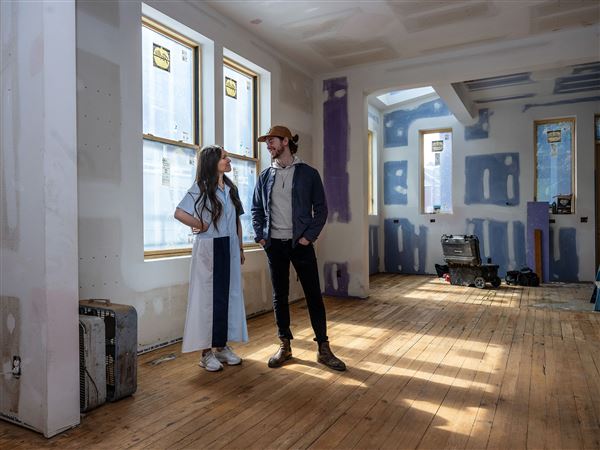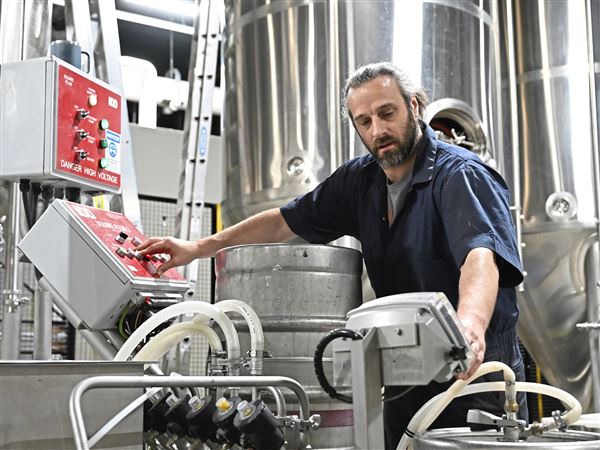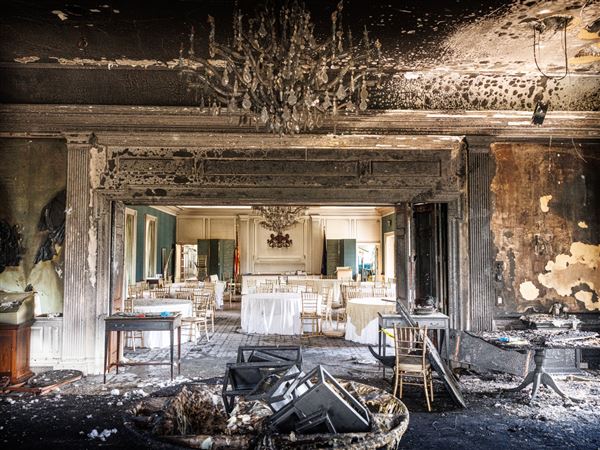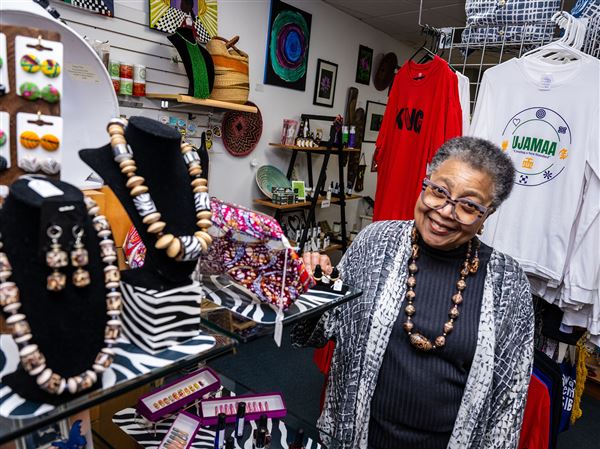William McNair, a bad mayor and an even worse judge of city temperament, campaigned for a dry Pittsburgh. If he were to win the city's 1921 mayoral election, "there [would] be no need of federal enforcement of Prohibition," he said. "If the police force cannot smash the booze traffic, I can get one that will."
He did not get that chance, as the Democrat was bested by William Magee, a Republican who had little interest in enforcing Prohibition's ban on booze. Less interested still was his successor, Republican Charles Kline, whose opposition to Prohibition -- and the endemic corruption fostered by that hostility -- was the defining characteristic of his tenure. His public safety director openly defied U.S. prohibition agents, saying, "Let the federal men raid. It's their business," not the city's. The mayor himself said he would not have his police enforce a temperance law that "is regarded as abnormal from Maine to California."
Kline resigned in 1933, after having been indicted on 40-some counts of corruption, but in this and many other U.S. cities during the 1920s, better an openly corrupt politician than an openly dry one. Prohibition, as a national law, officially died 80 years ago today, but in Pittsburgh -- as in just about every other place with the proper mix of criminals and thirsty immigrants -- the temperance movement flat-lined from the start.
"It was pretty much doomed," said Daniel Okrent, author of "Last Call: The Rise and Fall of Prohibition," and former public editor at the New York Times. "It became very unpopular very quickly," particularly in cities.
Chicago was the most notoriously violent and Detroit, "the city on a still," was booziest of them all by Mr. Okrent's measurement, but Pittsburgh was no slouch. Western Pennsylvania was, by one man's description, "the wettest spot in the United States" during the Prohibition era, although a lot of other spots made the same claim. Literary Digest said Pittsburgh was "wet enough for rubber boots," and the term "speakeasy" is said to have been coined here, pre-Prohibition, when McKeesport saloon owner Kate Hester told her rowdy patrons to "speak easy, boys, speak easy," for fear of drawing police attention.
Pittsburgh in the 1920s was a diverse and dynamic place, and much of that dynamism was fed by the city's immigrant population: Two-thirds of the city's industrial labor force at that time had been born in another county, and even if those immigrants had fully understood English language and American law, they would have been unlikely to give up their imbibing traditions. The immigrants who populated the labor force -- the Irish, the Jews and the Italians in particular -- also proved adept at bootlegging, with the Irish manning the city's saloons and providing political cover, and the Jewish and Italian communities handling sales and transport.
Mix that immigrant heritage with a potent anti-establishment animosity dating to the Whiskey Rebellion, stir in a patchwork of then-autonomous boroughs, townships and cities -- each with its own political fiefdoms and pervasive corruption -- and the Volstead Act (which was the regulatory vehicle that enforced the 18th Amendment to the U.S. Constitution) never stood a chance here. Bootlegging was instantly big business.
At times in Pittsburgh, that business was protected with great, unpredictable outbursts of violence. But more often, the bootlegging business was guarded by Pittsburgh's indifferent politicians and the ineffective federal dry agents who were stationed here.
"One big lesson is that it is quite tricky to enforce moral regulation," said Julien Comte, a University of Pittsburgh history instructor and author of "Let the Federal Men Raid: Bootlegging and Prohibition Enforcement in Pittsburgh."
Which is not to say the federal men didn't try. J.W. Conners, the first "prohibition administrator" in Pittsburgh, said, "We feel assured that before another anniversary of the prohibition laws is observed, Pittsburgh and Western Pennsylvania will take on the semblance of a Sahara." John Pennington, another prohibition administrator here, conducted more than 15,000 raids and arrested more than 18,000 people in the region, according to a news account at the time.
"His agents closed down over 3,000 distilleries, [shuttered] 16 regular breweries and raided more than 400 'wildcat' breweries," Mr. Comte wrote.
It was but a drop in the bucket. Bootlegging raids had negligible effect: With most fines under $100 for minor offenses, arrests were scarcely a disincentive.
And if the Volstead Act was little discouragement to those who would make, transport and resell booze, it was none at all to those who would drink the stuff. The consumption of booze was not prohibited by the Volstead Act, and under Prohibition, individuals were still permitted to make their own wine and fruit cider at home (but not beer). And the federal government hamstrung its own efforts by legalizing alcohol for medicinal purposes, to be dispensed by druggists and doctors and housed in federal warehouses. There was more whiskey stored in Pittsburgh warehouses than "in any state of the Union, except Kentucky," according to the government.
Some of that alcohol was routinely "lost," and other times, distillery warehouses were robbed outright. Between January 1920 (the first month of Prohibition) and June of that year, 13 Pittsburgh-area warehouses had been robbed of thousands of gallons of booze. Without curbing the supply, it proved difficult to snuff demand. Speakeasies -- as well as "blind pigs," "blind tigers," "poor man's clubs" and "kitchen barrooms" operating out of homes -- proliferated.
"The dries had their law," Mr. Okrent said, "and the wets had their booze."
Roots of temperance
The law -- while it did succeed it reducing per-capita alcohol consumption -- was such a spectacular failure in every other regard that it's hard to fathom the political forces that led to the rewriting of the U.S. Constitution. But America was in the midst of change -- women's suffrage, a new income tax, direct election of U.S. senators -- and Prohibition was a natural fit for the times.
It was not an of-the-moment campaign, however; the U.S. temperance movement had been building for decades. In other cities, and across the country, the "native Protestant middle class" and the Women's Christian Temperance Union were the loudest evangelical voices. Liberal, "right-thinking" progressives lent their voices to the effort, believing radical, social engineering was the best way to pull America's drunkards out of the morass, Mr. Okrent said.
In Pittsburgh, middle-class Irish Catholics also played a major role, and by the start of the 20th century, the Catholic Total Abstinence Union of America had branches operating out of churches across the city, including out of St. Paul Cathedral in Oakland, St. Bridget in the Hill District, and St. Patrick in the Strip District, according to Victor A. Walsh's study of Irish Catholic imbibing and teetotaling in Gilded-Age Pittsburgh.
The CTAU and their Protestant compatriots argued that alcohol was the cause of disease, low morals, urban hedonism, bad debt, domestic abuse and a variety of other social ills. Prohibition would cure all of this.
"The reign of tears is over. The slums will soon be a memory," predicted Billy Sunday, a pro ballplayer with the Pittsburgh Alleghenies who became an influential preacher. "We will turn our prisons into factories and our jails into storehouses and corncribs. Men will walk upright now, women will smile and children will laugh."
Pittsburgh remained unconvinced, as did its Catholics -- Gaelic-speaking immigrants living in the city's Skunk Hollow and Point Hollow were "renowned for their hard drinking and gang life, stubbornly resisting all forms of temperance, including that [of] the CTAU," Mr. Walsh wrote.
"The higher your Catholic population, the higher probability" that spirits were readily available, Mr. Okrent said.
And so it was in Pittsburgh. Pennsylvania Gov. Gifford Pinchot, a staunch "dry," was helpless to enforce the law, and the federal government was nearly as impotent, with a few exceptions: The Volstead Act's last gasp here was a 1928 grand jury indictment that netted 167 people. The grand jury reported the typical manner of "enforcement" in the city's South Side:
"Anyone interested in opening a [bar] first needed to discuss the matter with Ward Chairman Francis Kirley or Police Inspector John McArdle," Mr. Comte wrote. Later, they "received an impromptu visit from the Meyers brothers, who offered to sell them moonshine. Once the first order had been placed, the Meyers told their new client that they were not to buy moonshine from anybody else. A few nevertheless did -- and were conveniently raided by McArdle's men."
It was, according The Pittsburgh Press, "one of the most sweeping liquor conspiracy investigations" ever conducted. The police superintendent, three police inspectors, 12 lieutenants, five Republican ward chairs and two magistrates were indicted.
McArdle was one of them. Today, there's a pub named after him in the South Side.
Undoing an amendment
By the early 1930s, the Roaring Twenties were a memory and the Great Depression was a vise on the land. The U.S. Treasury needed money. America needed jobs. And alcohol -- wine and spirits to some degree, but especially beer brewing -- was an obvious source of both. Brewing, before 1920, was America's fifth-largest industry in terms of vested capital. And before the income tax was put in place for good, via the Revenue Act of 1913, 40 percent of domestic tax revenue had come from alcohol excise taxes, Mr. Okrent said.
That Congress agreed to plow under such major piece of the U.S. economy seems "unimaginable" today, he said. And soon, lawmakers were imagining ways to undo the amendment.
Congress approved the repeal language on Feb. 20, 1933, at which point the task of ratification fell to state delegates, a process that took 10 months. Before the new amendment could be ratified, President Franklin Roosevelt amended the Volstead Act on March 22 to allow the manufacture and sale of "3.2" beer (3.2 percent alcohol by weight) as well as light wines. Finally, on Dec. 5, the 18th Amendment was officially repealed, when the 21st Amendment was ratified by Utah, Ohio and Pennsylvania (bringing the number of ratifying states to 36 -- the constitutional threshold for passage).
In Harrisburg, Lt. Gov. Edward Shannon led the historic repeal vote, and by 12:51 p.m., the ballot had been cast. "Two copies [of the repeal roll call] were [shipped] immediately to Washington, one by plane, the other by motorcycle," according to The Pittsburgh Press.
By that evening, booze was legal again. The city's bars and hotels announced that they would be ready for customers, "equipped to meet all demands of their patrons for a gin buck, a straight whisky or a Manhattan cocktail in celebrating the passing of the dry era," The Press said. The biggest change from 1920 to 1933 was, according to The Press, the presence of women, who had been given the right to vote just a few months after the 18th Amendment came into effect. Coconut Grove and Kilkeary Hotel were among the first to open legally, their owners having driven or flown to Harrisburg to fetch operating licenses.
The next day, the newly established Liquor Control Board announced that Allegheny County would be getting 21 liquor stores. Within months, Pennsylvanians would be complaining about the new system, which exists to this day: "There are not enough stores and they are not suitably stocked," read one letter, published in The Press in February 1934.
First Published: December 5, 2013, 4:58 a.m.
















